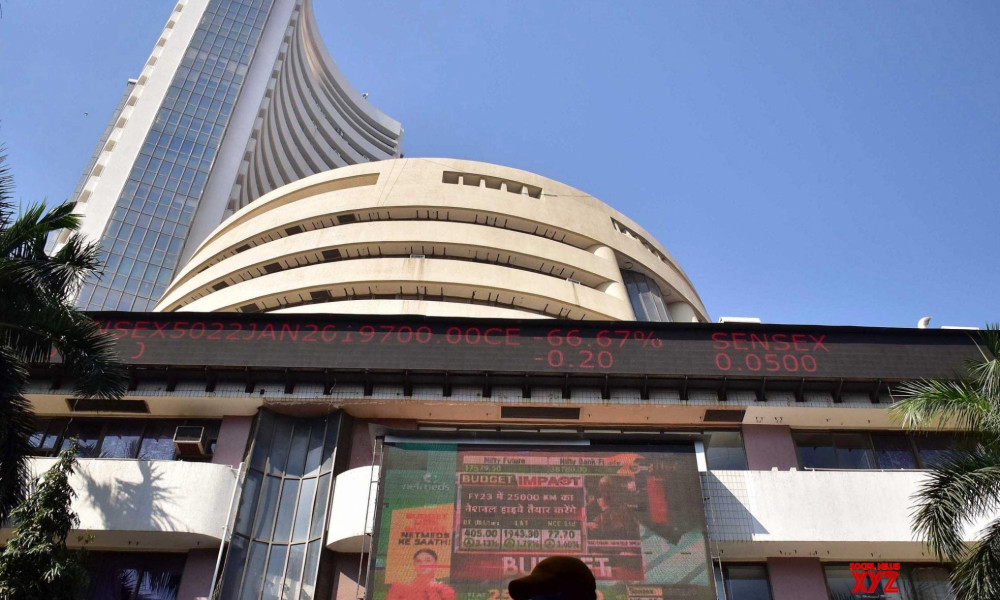The combined market valuation of seven of India’s top 10 most-valued companies surged by Rs 1,55,710.74 crore in a holiday-shortened week. This impressive growth was supported by a positive trend in domestic equities, reflecting strong investor confidence. Tata Consultancy Services and Bharti Airtel stood out as the biggest gainers, according to official data. The market’s upward movement highlights the resilience of key players in the financial landscape.
During the week, the benchmark Sensex gained 259.69 points, or 0.30 percent. On Thursday, the 30-share index reached a 52-week high of 85,290.06, signaling robust market momentum. This performance underscores the dynamic nature of India’s financial markets. Investors closely watched these developments, anticipating further gains.
Among the top-10 companies, Bharti Airtel, TCS, State Bank of India, Bajaj Finance, Infosys, and Life Insurance Corporation of India saw increases in their market capitalisation. In contrast, HDFC Bank, ICICI Bank, and Hindustan Unilever Limited experienced declines. This mixed performance illustrates the selective nature of market movements.
TCS saw its market value jump by Rs 36,126.6 crore, reaching Rs 11,08,021.21 crore. Infosys added Rs 34,938.51 crore, bringing its valuation to Rs 6,33,712.38 crore. These gains highlight the strength of the IT sector in driving market value. Such increases reflect positive investor sentiment towards these firms.
State Bank of India’s market capitalisation climbed by Rs 13,892.07 crore to Rs 8,34,817.05 crore. Bajaj Finance’s valuation rose by Rs 11,947.17 crore to Rs 6,77,846.36 crore. These figures demonstrate the broad-based nature of the market’s upward trend. Financial institutions played a key role in this growth.
Bharti Airtel’s mcap increased by Rs 9,779.11 crore to Rs 11,57,014.19 crore. LIC’s valuation went up by Rs 2,340.25 crore to Rs 5,62,513.67 crore. These additions contributed significantly to the overall market value increase. The telecom and insurance sectors showed notable strength.
On the downside, ICICI Bank’s market value fell by Rs 43,744.59 crore to Rs 9,82,746.76 crore. HUL’s valuation declined by Rs 20,523.68 crore to Rs 5,91,486.10 crore. HDFC Bank’s mcap dropped by Rs 11,983.68 crore to Rs 15,28,227.10 crore. These declines tempered the overall market gains.
Bharti Airtel remained among the most valued firms, followed by HDFC Bank, TCS, ICICI Bank, State Bank of India, Bajaj Finance, Infosys, Hindustan Unilever, and LIC. This ranking shows the shifting dynamics in market leadership. Investors keep a close eye on these positions for strategic decisions.
Analysts noted that the Nifty continues to trade above its 20-day, 50-day, and 200-day EMAs. This pattern highlights a strong underlying bullish structure and sustained trend strength. Such technical indicators provide insights into future market movements. They suggest ongoing positive momentum.
On the weekly timeframe, the RSI stands at 61.60 and is trending sideways. This indicates a neutral-to-positive bias with potential for renewed momentum once consolidation ends. Market watchers see this as a sign of stability. It points to possible upward moves ahead.
Experts highlighted that on the downside, a decisive break below 25,670 could accelerate weakness towards 25,500, and further down to 25,400. These levels serve as critical support zones for traders. Monitoring these thresholds is essential for risk management. They help in anticipating market shifts.
On the upside, immediate resistance is seen at 25,950, followed by 26,000 and 26,100. A sustained move above these levels would confirm the continuation of the bullish trend. Failure to cross them may keep the short-term trend range-bound. This analysis guides investment strategies.
The market value increases reflect broader economic trends and corporate performance. Companies like TCS and Bharti Airtel led the charge with substantial gains. Their success stories inspire confidence in the market’s potential. Investors remain optimistic about future growth.
As the market navigates these levels, the focus remains on key indicators and corporate results. The holiday-shortened week did not dampen the enthusiasm. Instead, it showcased the market’s ability to adapt and thrive. This resilience bodes well for upcoming sessions.
The interplay between gainers and decliners offers a balanced view of market health. While some firms saw dips, the overall trend was positive. This diversity in performance underscores the complexity of financial markets. It reminds us of the importance of diversified investments.

